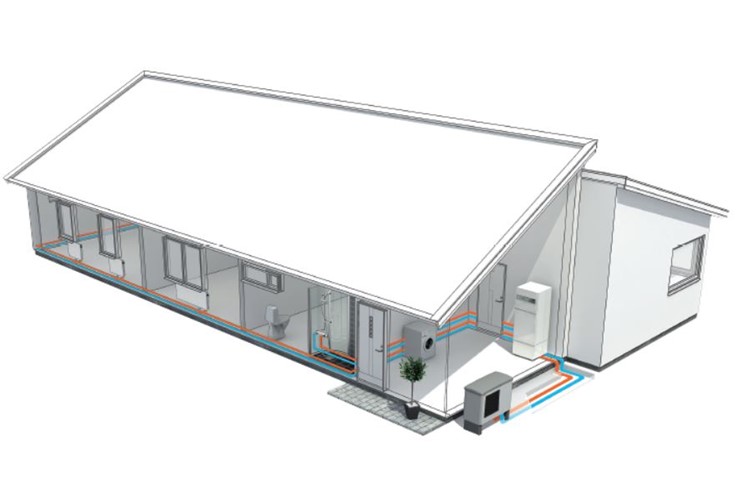Energy Saving Grants up to £10,000 are now available
The Government Green Homes Grant & RHI incentives has made Heat pumps more affordable and ThermaSkirt even more desirable.
The Green Homes Grant scheme is now open to help homeowners make energy-efficient improvements to their properties. Under the scheme, the government will pay two-thirds of the cost of energy-efficient home improvements up to the value of £5,000 per household (and up to £10,000 if you fulfil certain criteria).
Heat Pumps are among the improvements eligible under the scheme.
Heat Pumps are an eco-friendly way of creating hot water and heating for your home, either by extracting free energy from the air or from the ground around your home. They operate most efficiently when providing water at lower flow temperatures than a traditional boiler. Until recently, room heaters suitable for heat pumps have been limited to underfloor heating, oversized radiators or fan assisted space heaters. For many properties this has been impossible to retrofit affordably, impractical due to space restrictions or undesirable due to the aesthetics.
Using ThermaSkirt H2O skirting heating with its larger surface area and all-around heat distribution ensures that even at heat pump lower operating temperatures, comfort and controllability is maintained. The simple above ground installation of ThermaSkirt means little disruption or inconvenience to the home owner, and no loss of wall space, making the retrofitting of renewable technology more practicable, affordable and desirable.
Which Solution is right for your project?
Heat Pumps
A heat pump has been described as like a fridge in reverse, in that it draws heat energy from the environment (either air or the ground) and using the physics of condensing a gas into a liquid and evaporating it back into a gas, releases heat energy; usually into water storage cylinder. This heated water can then be used to provide showers and baths or heating. The heat energy they provide is most efficiently generated at lower temperatures than those found in a gas boiler; usually 50°C or less. This means that a) the heat emitter needs to be larger compared to a standard radiator to deliver the same amount of heat, and b) the property needs to be well insulated to perform effectively; usually with an EPC rating of C or better. Until recently these emitters have usually been limited to underfloor heating, oversized or even fan assisted radiators. For this reason, heat pumps are best suited to new build projects or ones undergoing substantial improvements.
Costs
The average cost of an air source heat pump installed is around £5~£10,000 & £15~£20,00 for Ground Source plus any costs to change the emitters. Grants up to £5,000 and RHI incentives are available under the Governments Green Homes Grant and the Renewable Heat Incentive. As they use electricity, and electricity is typically 3 ~ 4 times the cost per KwH of mains gas (15~18p vs 4~5p)¹ then the Coefficient of Performance (or CoP) is vital. The heat pump needs to perform with a CoP of at least 3 or 4 to provide parity with a gas boiler. If the property is poorly insulated and the CoP drops below 3, the running costs are likely to be more than a new gas boiler
Pros
Best suited to replacing properties on oil or LPG gas. Ideal for new build or substantially improved properties. Can reduce the CO2 footprint of a property especially if solar PV is installed
Cons
More expensive to install and run than a gas boiler. Fewer installers & maintenance engineers UK wide. Requires outdoor space or garden. Sometimes struggle in very low temperatures and/or exposed locations We Recommend: Using the ThermaSkirt H2O BM3 profile as the larger surface area permits lower flow temperature. Less disruption than a UFH system means easier retrofit. BM2 profile may be employed upstairs if UFH is preferred at ground floor. 1 All data from Energy Savings Trust
We Recommend
Using the ThermaSkirt H2O BM3 profile as the larger surface area permits lower flow temperature. Less disruption than a UFH system means easier retrofit. BM2 profile may be employed upstairs if UFH is preferred at ground floor.

































